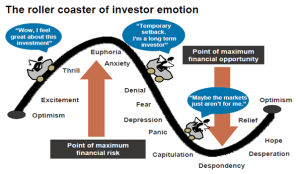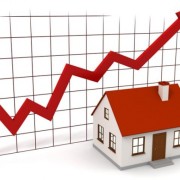What stage of the Investment Cycle are we in?
/0 Comments/in Archived, News /by Julius TanA major concern for many involved in investing is our location in the investment cycle. There are those who are starting to predict the worst and worry those around them. After doing a bit of research we feel these fears are unfounded. We are six years out from the Global Financial Crisis, since then global shares have increased by 159% while Australian shares are up 91%. All in all things are looking good. Let’s have a look at the cycles and our current position within them.
Some believe that the current bull market has run its course and we are overdue for the next bear however there is no set rule for the length a bull or bear can run. While the current bull has been running longer than the average it is by no means the longest. Depending on one’s definition of a bear market it could be seen that there was a bear market in America in 2011 which would make the current bull well below average.
Australia and the global market definitely had a bear market in 2011 and so these markets are currently running below average for a bull. With the definition so widely open to interpretation it’s easy to see why some investors are starting to panic. Many, however, feel that the current bull is nowhere near its peak and the threat of a bear market is a distant concern.
The Phases Of A Bull Market Within An Investment Cycle
It is generally agreed that a bull market has 3 phases. Let’s investigate these phases of the investment cycle.
Phase 1: Economic conditions are weak. Investors are lacking confidence. Interest rates are low, as are bond yields. The experienced investor sees a great opportunity.
Phase 2: Economic growth is improving in this part of the investment cycle. Profits are strengthening. All investors are starting to become optimistic.
Phase 3: Investors are beside themselves! With strong profit conditions shares become overvalued. Inflation becomes a problem. The banks react by using their tight monetary policy which pushes bond yields higher. This combination of over-valuation, loaded share investors and tight monetary policy exhausts the bull and starts a new bear market.
It typically takes 3-5 years to complete the bull market phases, but as we mentioned before the market is unpredictable and the bull or bear can last any amount of time. A bull will run until it gets tired!
Is There A Bear In The Woods?
To see if we have a bear creeping up on us we need to look at current market statistics. The current share market valuations are good, shares look expensive but once the earning yields are considered shares are still cheap, as are bond yields.
The global economy is growing well. It does appear to be doing so slower than usual but the slower it goes the longer the recovery period. This slow pace keeps us away from a bear market.
As it currently stands global monetary conditions appear positive and inflation is not yet an issue. Investors are feeling good, but that crazy amount of excitement seems to be a long way off. Australian investors are currently avoiding the share market and are opting for bank deposits.
Put simply the signs of an impeding bear threat are not there. Everything is riding along slowly but surely and the threat of a bear suddenly creeping up does not exist.
Investing Now in the Investment Cycle?
Currently US shares are expensive while most other markets are cheap. If you’re looking at investing at home, Australian shares should do okay, there are better opportunities abroad.
Growl?
In closing, it looks like we won’t be hearing the growl of bear for quite some time. There is no need to worry about the investment cycle as none of the signs that indicate and impending bear attack are present! Happy Investing!
The Home Prices And Interest Rates Of Australia
/1 Comment/in Archived, News /by Julius TanIt comes as no shock to hear that Australian properties are overvalued. The Reserve Bank has cut its interest rates with further cuts expected. This is as a result of numerous things including the Australian dollar remaining high, commodity prices falling lower than expected and the outlook for business investing falling. There is concern that further rate cuts will push house prices higher which may result in a collapse. Is this concern legitimate?
Helpful Construction
An economic uprising in Australia almost always involves housing. The lower interest rates drive housing demand and boost consumer home building. Plus more approvals are being given than ever before.
Hot Property
Are low rates just adding fuel to the already overheated property market? House prices are 14% above trend and the reason for this is highly debated. Low interest rates play a role but constrained supply is also a factor. There is a low vacancy rate and a short coming in supply of houses to the tune of 200,000 since 2001. Sydney is the main focus for property statistics, the rest of Australia is not as high.
Investing
Housing as an investment is a good idea and any serious investor will have housing under their belt as well as shares. Since 1920 housing has returned 11.1% per annum. This is not far behind shares returns, having both options is a positive move and also offers diversification.
In the short term we see low interest rates bringing gains in home prices, however this depends on location. The long term outlook is messy at best, housing is so expensive and has very low yields.
In the end there is no single reason that house prices are being pushed so high however it is clear the RBA is watching their actions carefully. One can only hope the prices become reasonable in time and must invest wisely.
Recent downturn in the stock market
/0 Comments/in Archived, News /by Julius TanWhile investors have been busy arguing about whether or not we are due for a bear market or not the stock market has taken a downturn. Could this be because some investors are worried we could be headed for recession? Who knows? Let’s take a look at what’s been going on.
During May we saw both the share market and the Australian dollar drop. This was a result of the Australian Bureau of Statistics releasing a report that showed weak business figures. Capital expenditure fell by 4.4% from January to March which came as a shock to many as it was expected to rise by at least 2%.
The outlook for business investment for the next financial year is not good as business are expected to invest 25% less than in the current financial year.
While the current outlook may not be positive the statistics could be wrong, an upturn was expected early in 2015 and it didn’t happen. Who knows if business investment will drop for sure? Either way, this is what is going on in the stock market right now. Happy investing!
Financial Advice Services
Useful Links
Opening Hours
Appointments available outside these times by prior arrangement.
| Monday | 9am - 5pm |
| Tuesday | 9am - 5pm |
| Wednesday | 9am - 5pm |
| Thursday | 9am - 5pm |
| Friday | 9am - 4pm |
| Saturday | Closed |
| Sunday | Closed |
Our Office
11 Lawrence St, North Ipswich QLD 4305
Contact Us
Phone: (07) 3281 1226Email: twm@totalwealth.com.au
Fax: (07) 3282 9900
Postal address
PO Box 2648, North Ipswich QLD 4305







